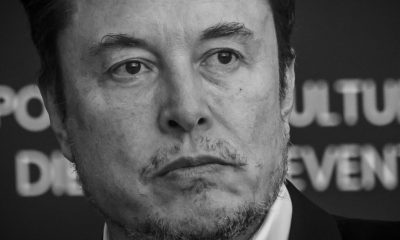Technology
YouTube launches fact check panels in the U.S.

Anyone who has ever fallen into a YouTube conspiracy theory wormhole just got thrown a lifeline.
YouTube announced Tuesday that it would begin rolling out “fact check panels” in the U.S. What does that mean? The company said in a blog post that if a user searches a topic on YouTube that has been debunked by fact checkers, a shaded box will appear at the top of the query results that identifies the claim and rates it as “false.”
The feature rolled out in India and Brazil last year, but the post said that the spread of coronavirus misinformation helped show the urgent need for this feature to become more widespread.

Just when the panels will show up is a bit tricky. YouTube explains that if your search is general, that won’t trigger a fact check — though YouTube will surface what it calls “news from authoritative sources” in “Breaking News” and “Top News” shelves. But if you search a more specific topic that is both a subject of misinformation and has been flagged and debunked by fact checkers, the panel will appear. Here’s how YouTube explains it:
There are a few factors that determine whether a fact check information panel will appear for any given search. Most important, there must be a relevant fact check article available from an eligible publisher. And in order to match a viewer’s needs with the information we provide, fact checks will only show when people search for a specific claim.
The fact checks come from the International Fact Checking Network, which includes organizations like PolitiFact and FactCheck.org. When fact checkers tag an article through an organization called The Claim Review Project, Google (and other social and search engines) will ingest the fact check and enable it to show up alongside the incorrect information.
Like other content platforms, YouTube has had to navigate how to deal with misinformation and conspiracy theories — deciding whether to ban such material, downrank it, fact check it, or just leave it alone. In January 2019, the company said it would stop surfacing “borderline content” in its recommendation algorithms.
The fact check tool will roll out over time, and eventually to other countries. For now, it’s another tool in the arsenal against misinformation. Even with the panels, make sure you and your loved ones know how to spot coronavirus misinformation when you see it.
-

 Business6 days ago
Business6 days agoTikTok Shop expands its secondhand luxury fashion offering to the UK
-

 Business5 days ago
Business5 days agoUnitedHealth says Change hackers stole health data on ‘substantial proportion of people in America’
-

 Business6 days ago
Business6 days agoMood.camera is an iOS app that feels like using a retro analog camera
-

 Business4 days ago
Business4 days agoTesla’s new growth plan is centered around mysterious cheaper models
-

 Business3 days ago
Business3 days agoXaira, an AI drug discovery startup, launches with a massive $1B, says it’s ‘ready’ to start developing drugs
-

 Business5 days ago
Business5 days agoTwo widow founders launch DayNew, a social platform for people dealing with grief and trauma
-

 Entertainment4 days ago
Entertainment4 days agoTesla’s in trouble. Is Elon Musk the problem?
-

 Business4 days ago
Business4 days agoUK probes Amazon and Microsoft over AI partnerships with Mistral, Anthropic, and Inflection






















